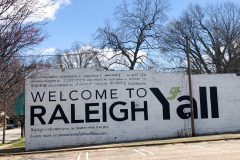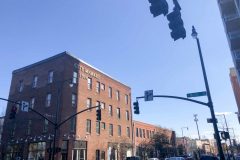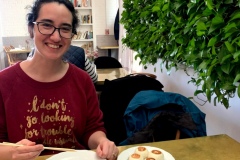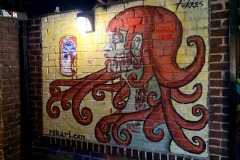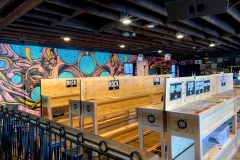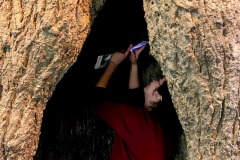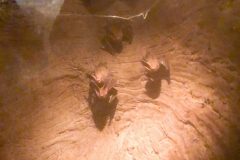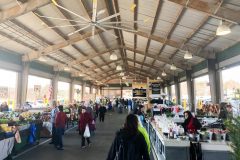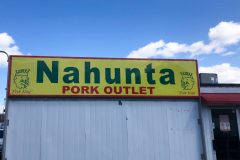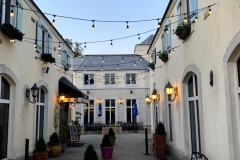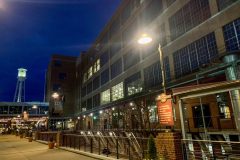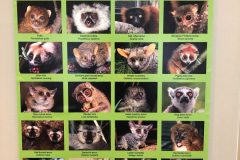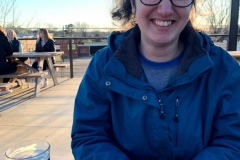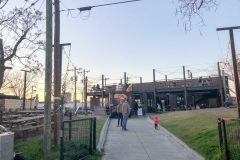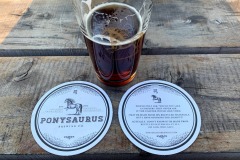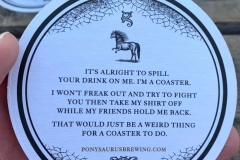We’re currently in Asheville, North Carolina, but let’s take a look back at our time in the Research Triangle (Raleigh/Durham/Chapel Hill). I had a birthday, saw some lemurs, and chopsticked some Southern dim sum.
Raleigh rally
North Carolina’s capital city has a cool mix of lived-in brick and craftsman neighborhoods as well as modern civic infrastructure. Downtown’s main drag between the capitol building and the performing arts center are filled with glass and steel buildings mixed with structures that use more classical materials like marble and granite.
There’s a hopping restaurant scene — like dim sum at Bhavana brewery/bookstore — and shops are starting to fill in the ground floors of the newer buildings. The record shop attached to the Pour House concert venue can only be reached by walking down a divey alley covered in sassy murals. The North Carolina Museum of Natural Sciences is free though a map will run you a small donation. This museum does a great job of making local natural history accessible and interesting – it has dinosaur artifacts and exhibits that show the diversity North Carolina’s flora and fauna from the mountains to the outer banks.
Outside of town is one of the locations of the North Carolina Farmers Market. I’ve never seen a market quite like this: instead of being a homegrown community setup on a local street, it’s a state-run operation housed in a fairgrounds-style campus of barns and stalls.
Click a pic to see a bigger pic
Durham, no bull
North Carolina’s fourth largest metro was a tobacco industry town, and you can see that history in the city today. All the old brick factories and warehouses are now being repurposed into living, shopping, and dining spaces. But the city is also seeing an upswing in new construction – blocks are lined with more modern mixed-used buildings (shops on the bottom, apartments up top) which we saw everywhere in the Puget Sound region. Still, there’s a lively arts scene and tons of local restaurants. And their local minor league baseball team — the Durham Bulls — is one of the most prominent we’ve found yet – some ‘80s movie I’ve never seen made the team an overnight sensation, and they’ve been doing alright ever since.
The region is called the Research Triangle because of the concentration of big research universities in the area (University of North Carolina in Chapel Hill, Duke in Durham, North Carolina State in Raleigh). One aspect of that research sits just down the road from the RV park where we stayed: the Duke Lemur Center. This facility houses the largest population of lemurs outside of Madagascar and studies not only their ecology and conservation but also primate natural history. An appointment-only tour offers an inside look at how scientists care for and learn from a variety of lemurs. Full disclosure: because the facility has a lot of double fences and glass enclosures, my pictures from that day were terrible. So here’s a clip of the TV show that introduced us to the center:
I just did the facility walking tour, not the free-range forest walkthrough like David Rees did in the clip. Definitely will spend the extra money (it’s all for conservation!) next time.
We closed out our Durham stay with a visit to the snarky/delicious Ponysaurus Brewing. Even on a brisk winter day, the beer garden was packed and the Baltic Bites food truck was turning out high volumes of Lithuanian munchies to pair with the punchy potables. Read the coasters.
RV checkup
- The ants are finally dead! After weeks of baiting a wall panel with cotton balls soaked in sugar water and borax, the little blighters are no more.
- Alan the Jeep reached a totally arbitrary milestone when we drove him over his 200,000th mile.
- Mark fixed a leaky hot water heater. We found water in an exterior compartment and backtracked the drippies to a connection with an eroded rubber seal. Moisture is an RVer’s #2 enemy (after ants), so catching this was a big win.

Lilly watch
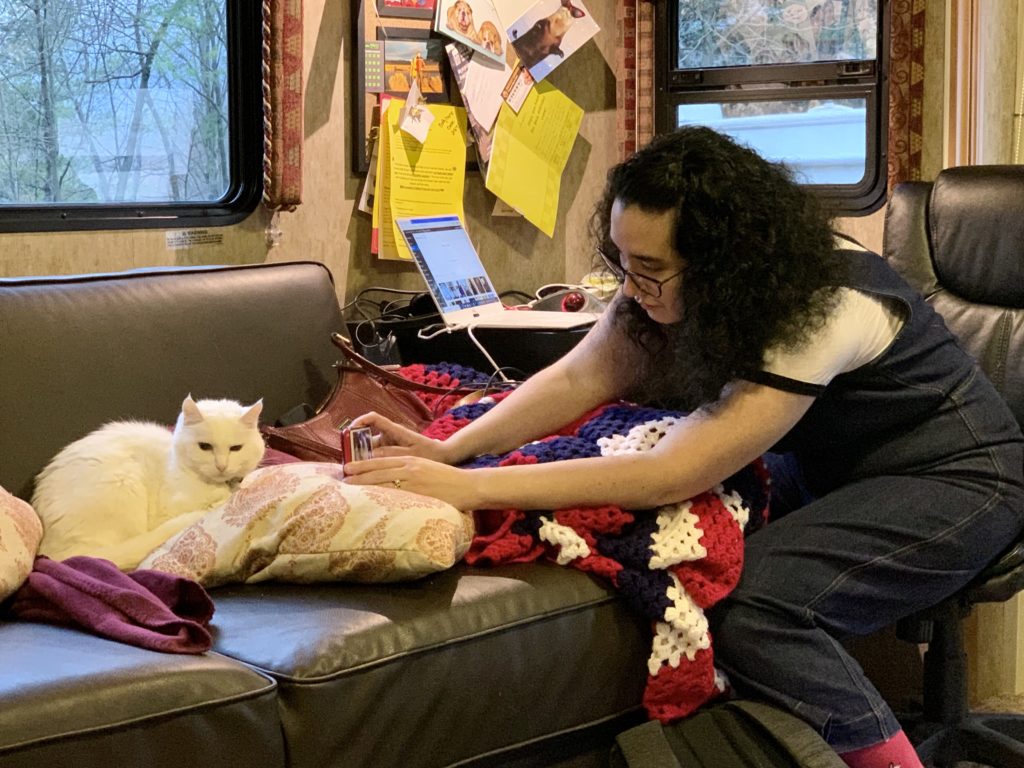
This week’s cat tax brought to you by Mark photographing me trying to bring you this week’s cat tax
What’s next?
As different areas close to non-residents, we’re digging into Asheville for a few more weeks — we are safe, healthy, and well-stocked. The local area is keeping a level head about shopping, and shops and restaurants are still open. Asheville was high on our list of places to see, so it looks like we’ll have plenty of time to get a sense of the local flair.
If you have any questions about our travels or RV life, leave us a message in the comments.

